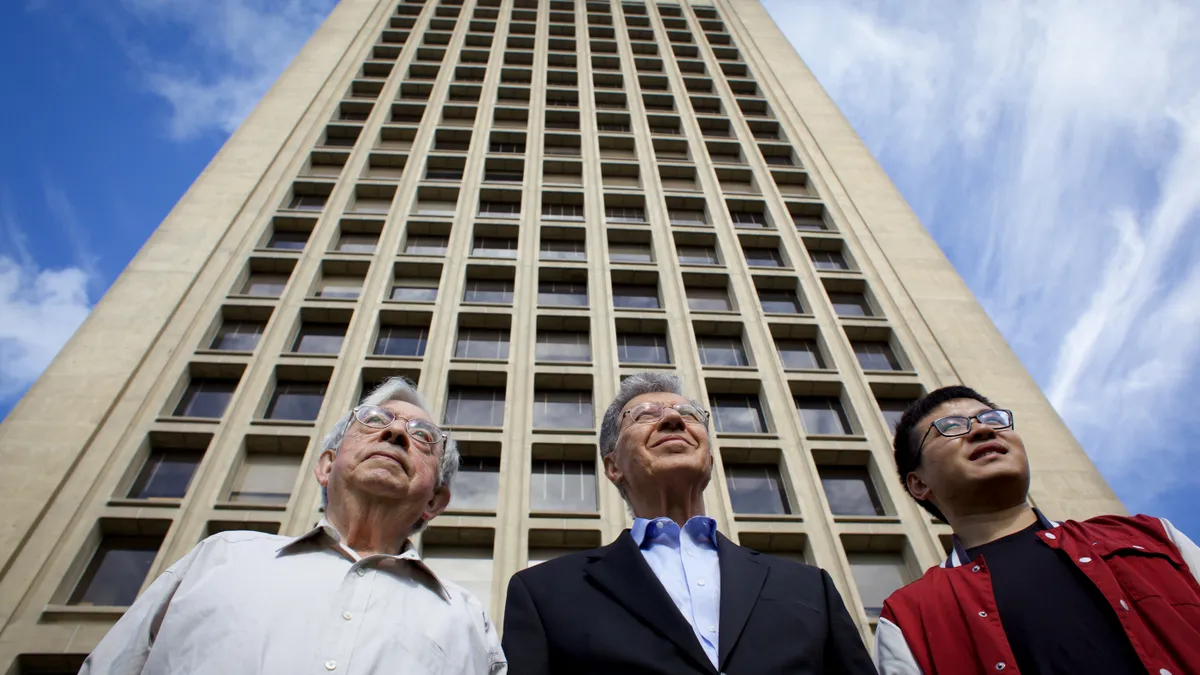Dive Brief:
-
Massachusetts Institute of Technology researchers have developed a computational model for analyzing noise transmissions and vibrations in the surrounding environment to measure building damage or structural stress. The technology could be used to pinpoint damage to or weakness in a structure following an earthquake or other significant seismic impact.
-
To test the system, the researchers installed 36 accelerometers at the 21-story MIT Green Building designed by Chinese–American architect I.M. Pei in the 1960s and made of reinforced concrete. The accelerometers measure movements and vibrations throughout the entire building.
- Measurements taken during a two-week period in May 2015 revealed surprising structural integrity, with only some torsional movement and swaying on windy days as a result of the foundation settling over the past 50 years.
Dive Insight:
Smart buildings continue to evolve into living buildings with increased sensing technology providing information on structural integrity in real-time. Though primarily a diagnostic tool designed to isolate damage or weakness incurred from seismic events, it’s not a stretch to conceptualize the MIT system integrated with self-healing building materials being developed for large-scale infrastructure. Such projects could, ostensibly, not only analyze data from damage-causing events but also begin repairs without human intervention.
Structural engineers and scientists have long been investigating ways to make buildings more seismic-resilient. The 1994 Northridge earthquake, which killed more than 60 people and injured more than 9,000 in and around Los Angeles, prompted major code rewrites across California and the Pacific Northwest.
The potential for seismic-resilient construction is greatest in new buildings, while the cost and complexity of upgrading existing homes will be more of a challenge, Construction Dive reported in May. Reports found that the high costs of seismic upgrades have limited the scope and value of renovation work in earthquake-prone regions.













